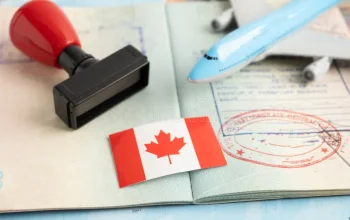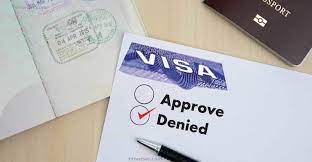Are you planning a trip to the vibrant and culturally diverse country of India? Excitement fills the air as you envision exploring its bustling cities, serene landscapes, and ancient landmarks. But before you embark on this unforgettable adventure, it’s crucial to navigate through the maze of Indian visa requirements smoothly. Fear not! In this comprehensive guide, we will demystify the complexities surrounding exiting India via airports and seaports, ensuring that your departure is hassle-free and filled with nothing but fond memories. So fasten your seatbelts as we embark on an informative journey through the intricacies of Indian visa regulations! Indian Visa Airport and Seaports for exit
Different Types of Indian Visas and their Validity Periods
India is a diverse and culturally rich country that attracts visitors from all over the world. Whether you are visiting for tourism, business, or education purposes, it is important to understand the different types of visas available and their validity periods for a hassle-free travel experience.
There are several types of Indian visas, each with its own specific purpose and validity period. Here are the most common ones:
1. Tourist Visa:
A tourist visa is issued to those who wish to visit India for recreation, sightseeing, or casual/short-term medical treatment. This visa is typically valid for 6 months from the date of issue and allows multiple entries into the country. However, some countries have been granted an extended 1-year tourist visa facility under certain conditions.
2. Business Visa:
A business visa is required for those traveling to India for business-related activities such as attending meetings, conferences, trade fairs, etc. This visa is also valid for 6 months from the date of issue and allows multiple entries into the country. Indian Visa from Laos
3. Employment Visa:
An employment visa is necessary if you are planning to work in India for an Indian company or organization. This type of visa has a longer validity period ranging from one year up to five years depending on your job contract.
4. Student Visa:
If you have been accepted into an Indian educational institution, you will need a student visa which can be valid for up to five years or until the completion of your course.
Step-by-Step Guide for Exiting India via Airports:
Exiting India via airports can seem like a daunting task, especially for first-time travelers. But with the right information and preparation, it can be a smooth and hassle-free experience. In this step-by-step guide, we will walk you through the process of exiting India via airports.
Step 1: Check Your Visa Requirements
The first step is to make sure that you have the necessary visa requirements to exit India. Depending on your nationality and purpose of travel, you may require a valid Indian visa or other documents such as transit visas. It is important to check these requirements well in advance to avoid any last-minute complications.
Step 2: Book Your Flight
Once you have confirmed your visa requirements, the next step is to book your flight out of India. Make sure to choose an airport that offers international flights and has immigration facilities for outbound passengers.
Step 3: Arrive at the Airport Early
It is always advisable to arrive at the airport at least 3-4 hours before your flight’s departure time. This will give you enough time to complete all necessary formalities without rushing.
Step 4: Check-in and Baggage Drop
After reaching the airport, head straight to your airline’s check-in counter. Here, you will need to present your passport and ticket for verification. If checking-in luggage, make sure it meets weight restrictions and is properly packed as per airline regulations.
Obtaining an Embarkation Card
Obtaining an Embarkation Card is a necessary step for all travelers wishing to exit India via airports or seaports. This document serves as a record of the traveler’s departure from India and must be presented to immigration officials at the port of departure.
The process of obtaining an Embarkation Card may vary slightly depending on the mode of transportation, but generally follows the same guidelines. Here are the steps to obtain an Embarkation Card:
1. Fill out the application form: The first step towards obtaining an Embarkation Card is to fill out the application form. This can be done either online or in-person at designated counters at the airport or seaport. The information required includes personal details such as name, passport number, date of birth, flight/ship details, and purpose of visit.
2. Submit supporting documents: Along with the application form, certain supporting documents may need to be submitted. These include a valid passport with at least 6 months validity remaining, confirmed travel tickets showing entry into another country within 24 hours of departure from India, and a copy of your visa.
3. Pay applicable fees: There are no additional fees for obtaining an Embarkation Card if you have already paid for your Indian visa. However, if you are traveling on a tourist visa that was issued for more than 180 days, you will need to pay a fee of INR 1000 at designated counters before proceeding with your application.



